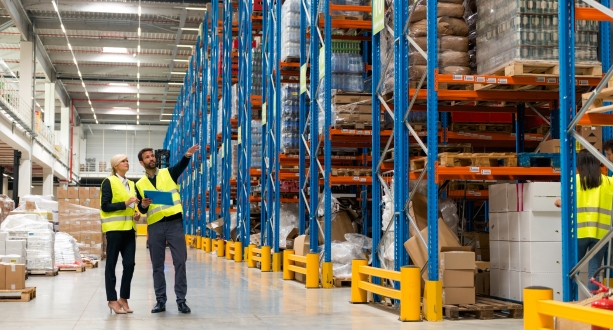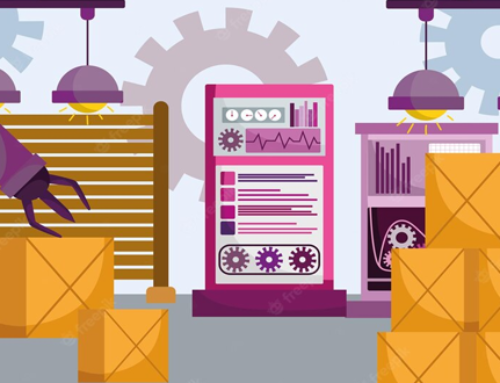Introduction to Manufacturing : The Engine of Industry

Manufacturing forms the backbone of any thriving economy. It’s the process of transforming raw materials into finished goods through the use of machinery, labor, and technology. This section delves into the significance of manufacturing, the transformative power of technology, and the evolving global landscape that shapes this critical sector.
Significance of Manufacturing in Industry
Manufacturing plays a pivotal role in:
- Economic Development: A robust manufacturing sector is a key driver of economic growth. It creates jobs, generates tax revenue, and fosters innovation.
- Technological Advancement: Manufacturing spurs technological advancements as companies continually seek ways to improve efficiency, reduce costs, and develop new products.
- Global Trade: Manufactured goods form a significant portion of international trade, promoting economic interdependence and fostering global partnerships.
- National Security: A strong domestic manufacturing base is crucial for national security, ensuring the production of essential goods and reducing reliance on foreign sources.
Evolution of Manufacturing Technologies

Manufacturing has undergone a dramatic transformation fueled by technological advancements. Here are some key milestones:
- First Industrial Revolution (18th Century): The invention of machines powered by water and steam ushered in mass production and factory systems.
- Second Industrial Revolution (Late 19th Century): Assembly lines, electricity, and the internal combustion engine further revolutionized production processes, leading to increased efficiency and standardization.
- Third Industrial Revolution (Mid 20th Century): Automation, computers, and robotics marked the rise of computer-aided design (CAD) and computer-aided manufacturing (CAM), enabling more complex production processes.
- Industry 4.0 (Present Day): The current era is characterized by the integration of cyber-physical systems, the Internet of Things (IoT), artificial intelligence (AI), and big data analytics into manufacturing. This fosters smart manufacturing, with interconnected machines, real-time data collection and analysis, and a focus on customization and flexibility.
Benefits of Technological Advancements:

- Increased Efficiency: Automation and robotics streamline production processes, reducing labor costs and lead times.
- Enhanced Quality: Advanced technologies ensure greater precision and consistency in product quality.
- Improved Flexibility: Smart manufacturing allows for rapid production changes and customization to meet diverse customer needs.
- Data-Driven Decision Making: Real-time data insights enable informed decisions about production planning, resource allocation, and preventive maintenance.
Global Trends Shaping the Manufacturing Landscape
The global manufacturing landscape is constantly evolving, influenced by several key trends:
- Globalization: Manufacturing has become increasingly globalized, with companies seeking lower production costs and accessing new markets. This necessitates robust supply chain integration and efficient logistics networks.
- Automation: The rise of automation and robotics is transforming the workforce, requiring a shift towards higher-skilled jobs focused on innovation, design, and maintenance.
- Sustainability: Environmental concerns are driving a focus on sustainable manufacturing practices, including energy efficiency, waste reduction, and the use of recyclable materials.
- E-commerce and On-Demand Manufacturing: The growth of e-commerce necessitates a more agile and responsive manufacturing approach to meet rapidly changing customer demands and shorter product lifecycles.
- Geopolitical Tensions: Trade wars and political instability can disrupt global supply chains, prompting companies to diversify their sourcing and production locations.
By understanding these trends and embracing technological advancements, manufacturers can adapt, innovate, and maintain a competitive edge in the ever-evolving global market.
Types of Manufacturing Processes: From Assembly Lines to 3D Printing
Manufacturing processes encompass the various methods used to transform raw materials into finished goods. This section explores traditional techniques that laid the groundwork for modern production, along with cutting-edge advancements and the growing emphasis on customization.
Understanding Traditional Manufacturing Methods
Traditional manufacturing methods played a crucial role in shaping the industrial landscape. Here are some key examples:
- Mass Production: This method, pioneered by Henry Ford in the early 20th century, revolutionized manufacturing by using standardized parts, interchangeable components, and assembly lines. It enabled high-volume production of identical goods at a lower cost.
- Casting: Molten metal is poured into a mold and allowed to solidify to create desired shapes. This technique is widely used for producing engine blocks, machine parts, and sculptures.
- Forging: Metals are heated and hammered or pressed into specific shapes. Forging produces high-strength components for crankshafts, gears, and tools.
- Machining: Subtractive manufacturing technique that uses cutting tools to remove material from a workpiece to achieve the desired shape. This is used for creating complex parts like gears, engine components, and valves.
Significance of Traditional Methods:
While some traditional methods are being replaced by advanced technologies, they continue to be relevant due to their:
- Cost-effectiveness: For high-volume production of standardized parts, traditional methods remain cost-efficient.
- Reliability: These well-established techniques are reliable and produce consistent results.
- Versatility: Traditional methods can be adapted to work with various materials.
Advanced Manufacturing Techniques
The rise of new technologies is transforming manufacturing processes with greater precision, flexibility, and customization capabilities:
- Additive Manufacturing (3D Printing): Lays down successive layers of material to create a three-dimensional object from a digital file. This allows for complex designs, rapid prototyping, and on-demand production.
- CNC Machining: Computer Numerical Control (CNC) machining utilizes computer-controlled machines to precisely remove material from a workpiece. This enables high-precision machining of complex parts with minimal waste.
- Robotics: Robots are increasingly employed in various manufacturing tasks, including welding, painting, assembly, and material handling. This enhances productivity, consistency, and safety in the workplace.
- Computer-Aided Design (CAD) and Computer-Aided Manufacturing (CAM): CAD software allows for designing products digitally, while CAM translates those designs into instructions for CNC machines, enabling seamless integration between design and production.
Benefits of Advanced Techniques:
- Increased Efficiency: Automation and advanced manufacturing technologies streamline production processes and reduce lead times.
- Enhanced Design Flexibility: 3D printing and other techniques allow for more intricate and customized designs.
- Reduced Waste: Additive manufacturing minimizes material waste compared to traditional subtractive methods.
- Improved Quality: Advanced techniques offer greater precision and consistency in product quality.
Customization and Flexible Manufacturing
The manufacturing landscape is shifting towards a greater emphasis on:
- Customization: Meeting the growing demand for personalized products and catering to specific customer needs.
- Flexible Production: Adapting manufacturing processes quickly to accommodate changing market demands and product variations.
- Agile Manufacturing: Rapidly responding to market fluctuations by using flexible production systems and efficient supply chains.
Importance of Customization and Flexibility:
- Meeting Customer Demands: Consumers increasingly seek personalized products and unique features, requiring manufacturers to adapt their production methods.
- Reduced Inventory Costs: Flexible manufacturing allows for on-demand production, minimizing the need for holding large quantities of finished goods in inventory.
- Enhanced Market Responsiveness: Businesses can quickly adjust production to capitalize on new trends and customer preferences.
By embracing a combination of traditional techniques, advanced technologies, and a focus on customization and flexibility, manufacturers can thrive in today’s dynamic market environment.
Key Components of a Manufacturing System: The Engine Behind Production
A well-functioning manufacturing system is a complex ecosystem with various interconnected components working in unison. This section explores three critical aspects: machinery and equipment, materials management, and quality control – all essential for efficient and successful production.
Machinery and Equipment in Manufacturing
Modern manufacturing relies heavily on advanced machinery and equipment to transform raw materials into finished products. Here’s a closer look at some key categories:
- Production Machinery: These are the workhorses of the manufacturing floor, encompassing machines specific to different processes. Examples include CNC machining centers for metalworking, injection molding machines for plastics, and textile looms for fabric production.
- Automation Systems: Automated equipment, including robots and programmable logic controllers (PLCs), performs repetitive tasks with greater speed, precision, and consistency compared to manual labor. This reduces human error and improves production efficiency.
- Industrial Robots: Robots are increasingly employed for various tasks, including welding, painting, assembly, and material handling. They can be programmed for complex movements, enhancing productivity and safety in the workplace.
- Computer-Aided Technologies: Integration of CAD software for product design and CAM software for controlling machinery enables seamless communication between design and production, streamlining the entire process.
Importance of Advanced Machinery:
- Enhanced Efficiency: Automation and advanced machinery significantly increase production speed and output.
- Improved Quality: Precise control and consistent operation of machines lead to higher quality products.
- Reduced Labor Costs: Automation can replace repetitive manual tasks, optimizing labor utilization and potentially reducing overall labor costs.
- Safety Improvements: Robots can handle hazardous tasks, reducing workplace injuries and improving overall safety for human workers.
Materials Management and Sourcing
Efficient materials management is critical for ensuring a smooth production flow and minimizing disruptions:
- Raw Materials: These are the building blocks of finished goods. Effective management involves selecting the right quality materials at the right cost, ensuring timely delivery, and maintaining adequate stock levels to avoid production delays.
- Supply Chain Management: Building strong relationships with reliable suppliers and establishing efficient logistics networks are crucial for securing a consistent supply of materials. Just-in-Time (JIT) inventory management techniques can also be implemented to minimize storage costs and waste.
- Procurement: The process of acquiring materials involves identifying vendors, negotiating prices, and managing purchase orders. Efficient procurement practices ensure cost-effectiveness and timely delivery of materials.
Benefits of Efficient Materials Management:
- Reduced Costs: Optimizing material usage and minimizing waste can significantly reduce production costs.
- Uninterrupted Production: Maintaining adequate stock levels prevents production delays caused by material shortages.
- Improved Quality: Using high-quality materials is essential for producing high-quality finished goods.
- Enhanced Supply Chain Visibility: Effective management provides real-time insights into material flow throughout the supply chain, enabling proactive problem-solving.
Quality Control and Assurance
- Maintaining high-quality standards is paramount for customer satisfaction and brand reputation:
- Quality Control (QC): Involves inspecting products at various stages of production to identify and rectify defects. This can be achieved through manual inspections, automated testing equipment, and statistical process control (SPC) techniques.
- Quality Assurance (QA): Focuses on preventing defects from occurring in the first place by establishing and maintaining quality standards throughout the entire production process. This includes implementing quality management systems like ISO standards and conducting regular audits to ensure adherence to those standards.
Importance of Quality Control and Assurance:
- Customer Satisfaction: Delivering high-quality products is essential for building customer trust and loyalty.
- Reduced Costs: Preventing defects minimizes rework, scrap, and warranty claims, leading to cost savings.
- Enhanced Brand Reputation: A consistent commitment to quality strengthens brand image and fosters positive customer perception.
By investing in advanced machinery, implementing efficient materials management practices, and prioritizing quality control, manufacturers can optimize production processes, minimize waste, and deliver high-quality products that meet customer expectations.
Challenges and Solutions in Manufacturing: Navigating a Dynamic Landscape

The manufacturing sector, while a powerful engine of economic growth, faces a multitude of challenges in today’s dynamic global market. This section explores three key issues and potential solutions for manufacturers to thrive in the face of adversity.
Supply Chain Disruptions and Resilience
Modern manufacturing relies on complex, interconnected supply chains. However, these chains are susceptible to disruptions from various factors:
- Global Events: Pandemics, natural disasters, and political instability can disrupt production and transportation of goods.
- Trade Wars and Tariffs: International trade disputes can lead to increased costs and supply chain bottlenecks.
- Supplier Issues: Supplier bankruptcies, production delays, or quality problems can impact a manufacturer’s ability to obtain necessary materials.
Building a Resilient Supply Chain:
- Risk Management: Identifying potential disruptions and developing contingency plans to mitigate their impact.
- Diversification: Sourcing materials and components from multiple suppliers across different geographic locations to reduce reliance on any single source.
- Nearshoring: Shifting production closer to the final market to reduce dependence on long-distance transportation and minimize disruption risks associated with global events.
- Investing in Technology: Utilizing real-time supply chain visibility tools and data analytics to monitor potential disruptions and proactively adjust production plans.
Workforce Management in the Manufacturing Sector
The manufacturing sector faces a growing challenge in attracting and retaining a skilled workforce:
- Skilled Labor Shortage: An aging workforce and a skills gap between job requirements and available talent create difficulties in filling open positions.
- Competition for Talent: Manufacturers compete with other sectors for skilled workers, necessitating attractive compensation packages and work environments.
Strategies for Addressing Workforce Challenges:
- Training and Development: Investing in upskilling and reskilling programs to equip existing employees with the necessary skills for advanced manufacturing technologies.
- Apprenticeship Programs: Developing partnerships with educational institutions to create apprenticeship programs that bridge the gap between theoretical knowledge and practical experience.
- Promoting Manufacturing Careers: Highlighting the rewarding aspects of manufacturing careers, focusing on innovation, technology, and competitive salaries.
- Creating a Positive Work Environment: Offering competitive compensation and benefits packages, fostering a culture of safety and innovation, and promoting work-life balance.
Adopting Sustainable Practices in Manufacturing
Environmental concerns are driving a shift towards sustainable manufacturing practices:
- Resource Depletion: Manufacturing processes consume a significant amount of raw materials and energy, leading to resource depletion and environmental damage.
- Waste Generation: Production processes often generate significant waste, including industrial waste and pollution.
Strategies for Sustainable Manufacturing:
- Energy Efficiency: Investing in energy-efficient technologies and processes to reduce energy consumption and associated carbon footprint.
- Waste Reduction: Implementing practices like lean manufacturing to minimize waste generation, promoting recycling and reuse of materials.
- Sustainable Materials: Utilizing recyclable or biodegradable materials in production whenever possible.
- Circular Economy: Adopting a circular economy approach where products are designed for disassembly and reuse, minimizing waste and extending product life cycles.
Benefits of Sustainable Practices:
- Cost Reduction: Efficient energy use and waste reduction can lead to significant cost savings.
- Enhanced Brand Image: Consumers increasingly value companies committed to sustainability, leading to a positive brand image and potential customer loyalty.
- Compliance with Regulations: Many countries have regulations in place to address environmental concerns. Implementing sustainable practices ensures compliance with existing regulations and avoids potential fines.
By proactively addressing these challenges and embracing innovative solutions, manufacturers can build resilient supply chains, cultivate a skilled workforce, and integrate sustainable practices, ensuring their long-term success in an ever-evolving global landscape.
Future Trends in Manufacturing: Shaping the Factory of Tomorrow
The manufacturing sector is on the cusp of a transformative era driven by technological advancements, innovative materials, and a focus on human-machine collaboration. This section explores three key trends that will redefine the future of manufacturing:
Industry 4.0 and Smart Manufacturing
Industry 4.0, also known as the Fourth Industrial Revolution, marks the extensive integration of digital technologies into all aspects of manufacturing. This fosters the rise of smart factories characterized by:
- Interconnectivity: Machines, sensors, and systems interconnected through the Industrial Internet of Things (IIoT) collect real-time data for continuous monitoring and optimization.
- Big Data Analytics: Advanced analytics tools analyze vast amounts of data to identify patterns, predict equipment failures, and optimize production processes.
- Artificial Intelligence (AI) and Machine Learning (ML): AI algorithms can analyze data, make autonomous decisions, and improve process efficiency through machine learning.
- Cyber-physical Systems (CPS): Integration of physical machinery with software and computer systems, enabling real-time communication and control.
Benefits of Smart Manufacturing:
- Increased Efficiency: Automation, data-driven decision making, and real-time optimization lead to significant efficiency gains.
- Enhanced Quality Control: Continuous monitoring and data analysis allow for proactive identification and correction of potential quality issues.
- Improved Flexibility: Smart factories can adapt production processes quickly to accommodate changing market demands and product variations.
- Predictive Maintenance: Real-time data analysis enables predictive maintenance of equipment, minimizing downtime and maintenance costs.
Innovations in Materials and Nanotechnology
The development of advanced materials and nanotechnology is revolutionizing the possibilities within manufacturing:
- Advanced Materials: New materials with unique properties, such as high strength, lightweight composition, or self-healing capabilities, are expanding design possibilities and product performance.
- Additive Manufacturing (3D Printing):: Advancements in 3D printing technology are enabling the creation of complex objects with intricate designs and customized features.
- Nanotechnology: The manipulation of matter at the atomic and molecular level opens doors for developing new materials with superior properties and functionalities.
Impact of Material and Nanotechnology Advancements:
- Lightweight and High-Performance Products: Advanced materials can create lighter, stronger, and more durable products across various industries.
- Product Innovation: New materials and 3D printing enable the creation of previously impossible designs and functionalities.
- Improved Sustainability: Nanotechnology can contribute to sustainable manufacturing by enabling the development of recyclable materials and eco-friendly production processes.
Collaborative Robotics and Human-Machine Interaction
The future of manufacturing workplaces involves a collaborative relationship between humans and robots:
- Collaborative Robots (Cobots): These robots are designed to work safely alongside humans, performing repetitive tasks and assisting with tasks that require dexterity or human judgment.
- Human-Machine Collaboration: Cobots take over physically demanding or hazardous tasks, while humans focus on higher-level cognitive functions like decision making, problem solving, and quality control.
Benefits of Collaborative Robotics:
- Enhanced Productivity: Cobots can handle repetitive tasks, freeing up human workers to focus on more complex activities.
- Improved Safety: Cobots are designed with safety features to minimize the risk of workplace accidents.
- Increased Worker Satisfaction: By taking over tedious tasks, cobots can contribute to a more engaging and rewarding work environment for human employees.
The Future of Manufacturing
As these trends converge, we can expect to see a future of manufacturing characterized by:
- Highly automated and interconnected smart factories leveraging digital technologies for optimal production processes.
- The widespread adoption of advanced materials and nanotechnology leading to innovative products with superior functionalities.
- A collaborative work environment where humans and robots work together, leveraging their respective strengths.
By embracing these advancements, manufacturers can ensure greater efficiency, sustainability, and adaptability in the face of a rapidly evolving global market.
Conclusion: Shaping Tomorrow’s World Through Manufacturing
Manufacturing forms the backbone of our economies, driving innovation, progress, and shaping the world around us. From the physical products we use daily to the technological advancements that propel us forward, manufacturing plays a pivotal role in building a better future.
The landscape of manufacturing is undergoing a significant transformation. Industry 4.0, with its emphasis on smart factories, automation, and data-driven insights, is revolutionizing production processes, leading to increased efficiency, enhanced quality, and greater flexibility. This, coupled with advancements in materials science and nanotechnology, opens doors for the development of innovative products with previously unimaginable functionalities.
However, the future of manufacturing extends beyond just efficiency and innovation. As environmental concerns escalate, sustainable practices are becoming paramount. Manufacturers are increasingly adopting eco-friendly processes, utilizing recyclable materials, and minimizing waste, contributing to a more sustainable future.
The human element remains crucial in this evolving landscape. While automation advances, the need for a skilled workforce is not diminishing. The future lies in fostering a collaborative environment where humans and robots work together, leveraging their respective strengths. Humans can focus on higher-level cognitive tasks, problem-solving, and innovation, while robots handle repetitive or hazardous activities.
Investing in workforce development, promoting training and skill-building programs, and creating an attractive work environment will be essential for attracting and retaining a talented workforce in the manufacturing sector.
In conclusion, manufacturing is not just about producing goods; it’s about shaping the world we live in. By embracing technological advancements, prioritizing sustainability, and fostering a skilled and collaborative workforce, the manufacturing sector can ensure a future characterized by:
- Enhanced living standards: Through innovative products and efficient production processes.
- Environmental responsibility: By adopting sustainable practices and minimizing environmental impact.
- A skilled and engaged workforce: Investing in human capital and creating rewarding career opportunities.
As we move forward, manufacturing has the potential to be a powerful driver of positive change, shaping a future that is not only technologically advanced but also sustainable and equitable. By harnessing the collective power of innovation, collaboration, and a commitment to a healthy planet, the manufacturing sector can continue to play a vital role in building a better tomorrow for all.









